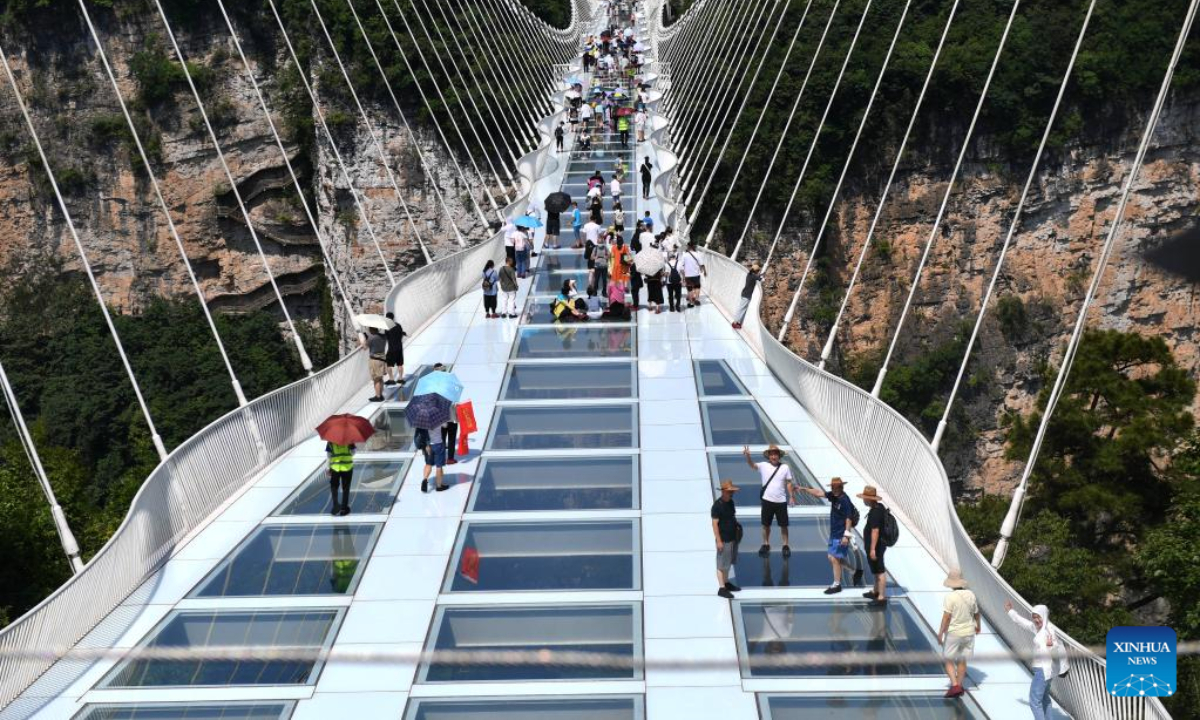
Tourists walk on a glass-bottomed bridge at Zhangjiajie Grand Canyon, Central China's Hunan Province, July 8, 2022. Photo:Xinhua
With refined policies in line with epidemic prevention requirements, including adjusting "circuit breaker" mechanisms for group tours from provincial to county levels, China's tourism sector has seen active recovery in the second half of the year, officials said on Wednesday.
Since the outbreak of the COVID-19 epidemic, China has been ramping up efforts to help ease pressure on tourism businesses, Miao Muyang, an official from the Ministry of Culture and Tourism (MCT), said at a press conference on Wednesday.
From enhancing financing support and reducing taxes and fees to stabilizing employment, the MCT has been joining hands with other departments to roll out measures to facilitate the recovery of the epidemic-battered tourism sector, Miao noted.
In May, Chinese authorities announced to adjust the "circuit breaker" mechanisms for group tours from provincial to county levels.
Scenic areas across the country have been providing discounts and other measures to attract tourists as well. Southwest China's Yunnan Province has seen its number of visitors recovered to about 90 percent of the level in 2019, and some of its famous scenic areas have even seen tickets sold out in July, according to media reports.
Tourism in Northwest China's Xinjiang Uygur Autonomous Region has been booming recently. Xinjiang's 5A-level scenic spots have seen average daily tourist visits exceeding 110,000 in July, up 201.08 percent month-on-month, according to the Xinhua News Agency.
Though China's tourism sector has experienced a hard time after the epidemic broke out, it has witnessed great development during the past 10 years. In the past decade, the number of cultural enterprises above designated size has increased from 36,000 to 65,000, with annual revenue increased from 5.6 trillion yuan ($816.37 billion) to 11.9 trillion yuan ($1.73 trillion), according to data from MCT.
The added value of cultural and related industries nationwide totaled 4.44 trillion yuan in 2019, accounting for 4.5 percent of the nation's GDP in that year, while the added value of tourism and related industries came to 4.5 trillion yuan, accounting for 4.56 percent of GDP.
By the end of 2021, there were 42,000 travel agencies, 14,000 A-level scenic spots and 8,771 star-rated hotels in China. The leading role of the cultural and tourism industries in the national economy has gradually become prominent, Miao noted.
